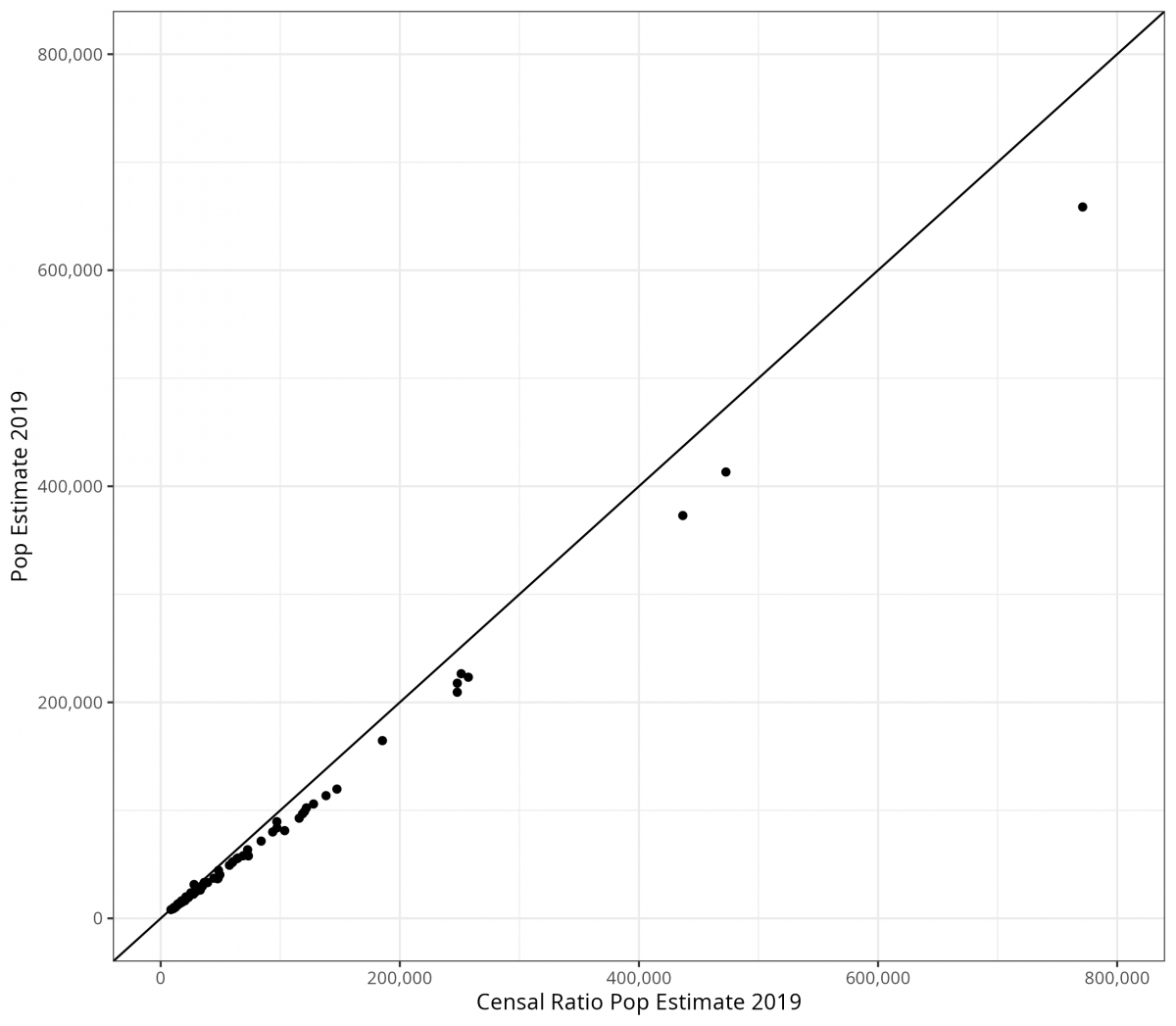
Unlocking Population Estimation Using Readily Available Data: Applying the Simplified Censal Ratio Method
Population estimation techniques rely on past population data, number of births, deaths, and migration. While various techniques have been used to accurately produce population estimates, the gold standard has been the cohort-component method. However, this method is limited by the fact that some populations may lack the appropriate indicators (e.g., births, deaths, or other changes to the population). The Censal Ratio Method needs less data to produce population estimates. By relying on vital records or data like voter registrations, the Censal Ratio Method is an alternative to the cohort component method for estimating population sizes with limited data. It is known that within U.S. counties, voter registrations are closely correlated with county populations but looking at voter registration alone would underestimate the population. Using data from the 2010 and 2019 voter registrations, our team estimated the population sizes of Alabama counties in 2019. We assumed that the relationship between voter registration and the total population would be the same in 2010 and 2019. We found that the Censal Ratio Method, which accounts for the ratio of voter registration to the county populations, outperforms a simple analysis of t voter registrations over time. This is broadly useful for estimating the size of relatively small populations or for temporally granular measures of population change.
Computation & Reproducibility
All code necessary to implement the methods and reproduce the figures and results in Unlocking Population Estimation Using Readily Available Data has been archived as of publication on April 17, 2024 by the Population Dynamics Lab here: UW PopLab Github.
Suggested Citations
(2024, April 17). Unlocking Population Estimation Using Readily Available Data. The Download, Population Dynamics Lab. https://population-dynamics-lab.csde.washington.edu/the-download/2024/04/17/unlocking-population-estimation-using-readily-available-data/ [Accessed July 27, 2024].
and (2024). Unlocking Population Estimation Using Readily Available Data: Computation Supplement. The Denominator, Population Dynamics Lab. https://github.com/Population-Dynamics-Lab/censal_ratio_method [Accessed July 27, 2024].
[DOI Link:] https://doi.org/10.6069/BVPC-4381
